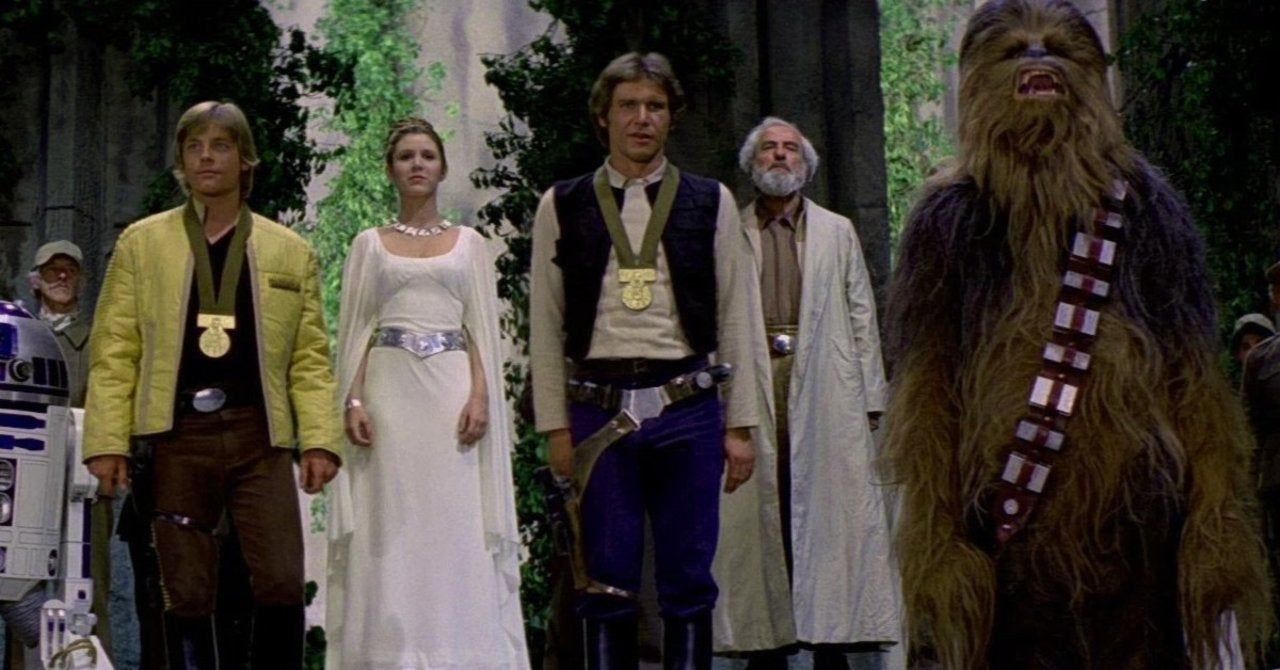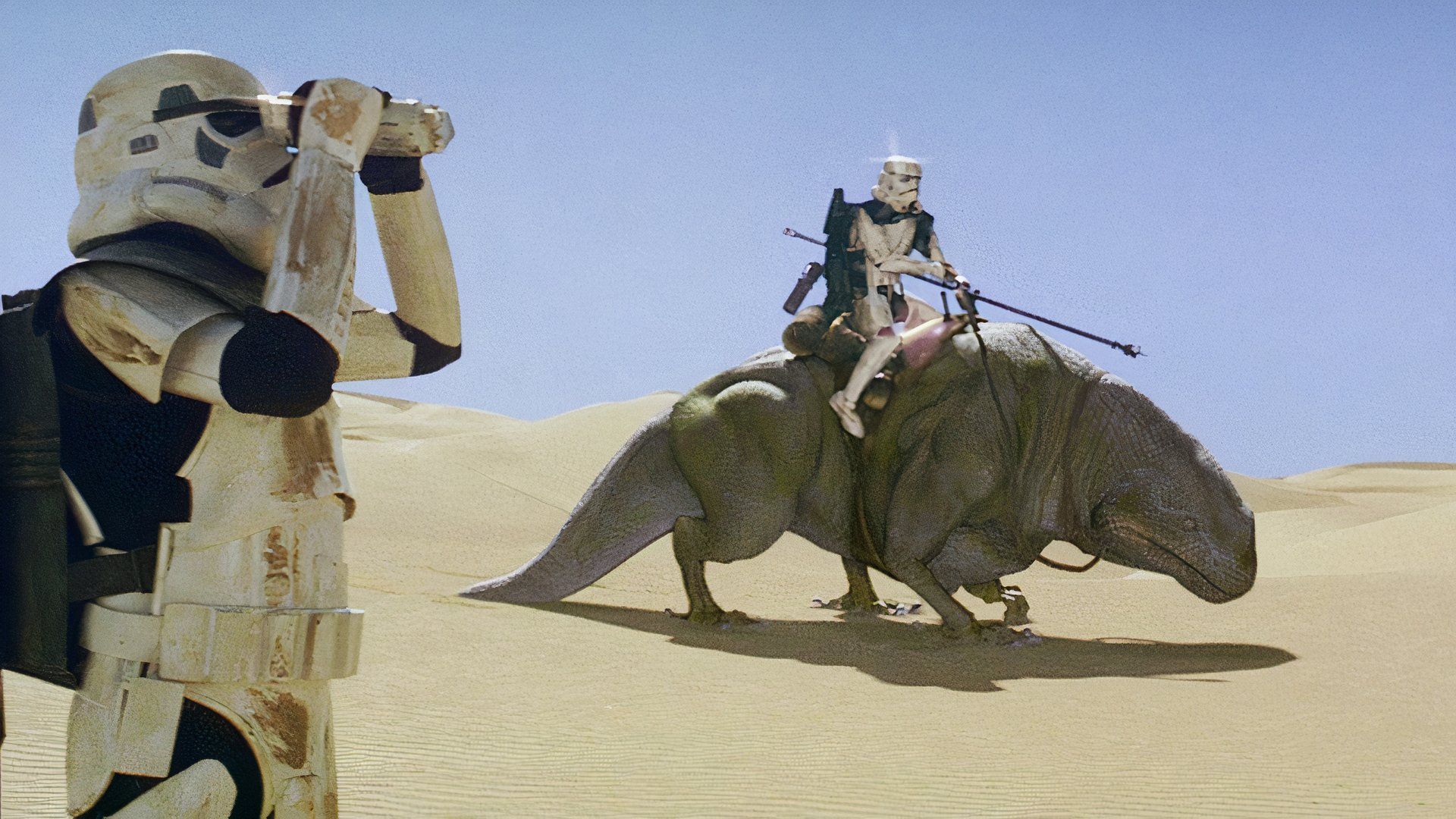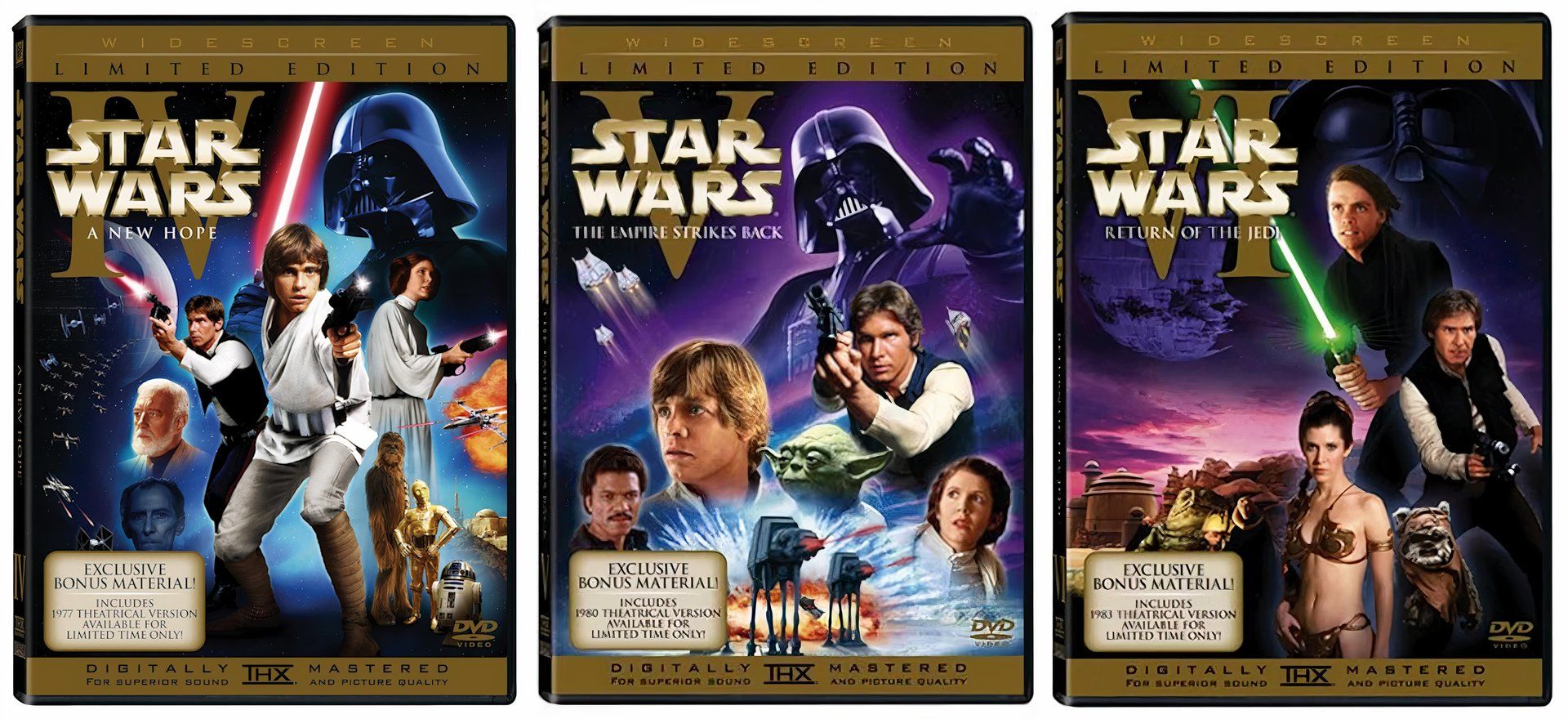Summary
- The controversial changes made to the original Star Wars film’s special edition sparked fan demand for the original cut’s release.
- The 1997 Special Editions saw significant upgrades, with some changes to iconic scenes sparking backlash among fans.
- Despite Lucasfilm’s reluctance, evidence suggests that a restored original cut of Star Wars may still exist for future release.
Even the most casual film fan is familiar with the “Original Cut” controversy surrounding the first Star Wars film. For the two decades following its 1977 release, Star Wars was essentially the same viewing experience for millions of fans around the world. However, the 1997 release of the Special Edition of the film ignited a cascade of changes and edits, from upgraded special effects to the addition of entirely new scenes.
As a result, the film we see today on Disney+ or on a 4K disc release is much different from the one released in 1977. The changes have inspired many fans to demand Disney release Star Wars in its original, theatrical form. Lucasfilm, however, no longer acknowledges the original version and has said it will never be released again. That poses the question: Does the original theatrical cut of Star Wars still exist in a film vault somewhere at Lucasfilm? The answer can be summed up in one unsatisfying word: probably.
Before we dive into the evidence of the existence of the fabled “original theatrical cut,” we should explore how and why the film has evolved over the years. It’s also important to understand why Lucasfilm no longer acknowledges the original cut.
George Lucas’ Original Vision
When the 1997 Special Edition of A New Hope was released on VHS home video, it included an introduction from Lucas, explaining his reasoning behind the changes to the film. He said “A famous filmmaker once said ‘Films are never completed, they’re only abandoned.'” He was actually paraphrasing a 1933 poem by French poet Paul Valéry, who expressed the common unsatisfied feeling of artists toward their “finished” work. Lucas had those same feelings for Star Wars but refused to accept the film as it was. He stated:
“Rather than living with my abandonment, I wanted to complete it.
While accepting an honorary Palme d’Or at this year’s Cannes Film Festival, Lucas told an audience “I’m a firm believer that the director, or the writer, or the filmmaker should have a right to have his movie be the way he wants it,” reiterating his belief that Star Wars was a work in progress when it was released in 1977.
At the time of Star Wars’ 1977 release, budget restrictions and technological limitations affected the quality of the special effects, despite the groundbreaking efforts of Lucas’ newly-formed visual effects company, Industrial Light and Magic (ILM). Although the film won an Oscar for Best Visual Effects, Lucas felt his epic vision was unfulfilled.
By the mid-1990s, however, ILM’s work on 1993’s Jurassic Park had greatly advanced the use of computer-generated imagery (CGI), changing the landscape for film effects work. The advent of CGI gave Lucas the opportunity to revisit the “abandoned” effects of his 1977 masterpiece, just in time for its 20th anniversary in 1997.
Star Wars Subtitles and Special Editions
The 1997 Special Editions allowed Lucas to “fix” the Original Trilogy, but his first change to Star Wars actually dates back to April 1981, when the film was re-released to theaters. “Episode IV: A New Hope” was added as a subtitle to the iconic opening crawl, because Empire featured an “Episode V” designation when it was released, signifying Lucas’ plans for a much larger saga.
The “Episode IV” version of the film was the only one released to home video, and now, most fans consider it the “original cut.” While most fans have never seen or even remember the original opening crawl, the documentary Empire of Dreams, streaming on Disney+, features a rarely-seen clip of it. For 20 years, that was the only true change to the film, but the 1997 Special Edition changed all of that.
All three films of the Original Trilogy saw changes and additions with their respective 1997 Special Edition releases, but A New Hope saw the most radical upgrades. Changes were made throughout the film, but the biggest upgrades were found in the Mos Eisley scenes and the final battle against the Death Star. Mos Eisley became a bustling spaceport filled with wild creatures, and the final battle featured dynamic dogfights, thanks to some impressive CGI.
The Special Editions were a surprise smash hit at the box office, with the trilogy earning nearly $140 million combined. Even with the positive response, some fans took issue with what they felt were over-the-top changes, fueling a push for Lucasfilm to make the original theatrical cuts available to fans.
Jabba, Maclunkey, and Special Edition Criticism
The inspiration for fans wanting a release of the theatrical cut of A New Hope can be summed up in three words: “Han Shot First.” While fans loved many of the updated effects and new scenes, some changes bewildered and even angered fans. A 1977 deleted scene featuring Harrison Ford’s Han Solo speaking with Jabba the Hutt was added to the film, with a horrendous-looking CGI Jabba the Hutt that looked so bad, Lucasfilm went back to improve the CGI, so even the Special Editions now have Special Editions.
The most egregious change, however, came when Greedo shoots at Han first in the Cantina sequence, after two decades of fans watching Han shoot first. The scene was so heavily criticized, that Lucasfilm has changed it multiple times since the 1997 Special Edition, with minor tweaks with every home video release. The latest change came in the Disney+ version of the film, which was later released on 4K disc, and featured Greedo saying “Maclunkey” before shooting.
Outraged fans felt it was a betrayal of the Han character, and it fueled calls for the unaltered, original cut of the film to be restored and released. While the odds of that happening are slim, fans have reasons to hope.

Star Wars Movies, Ranked From Worst to Best
The Star Wars franchise has consistently churned out new installments ever since 1977, so how do they all stack up?
A New Hope for the Original Theatrical Cut of Star Wars
On June 29, 2019, The Academy of Motion Picture Arts and Sciences screened their 70mm print of the original cut of Star Wars, which they have had in their library since 1977. Visual effects supervisor John Dykstra spoke at the screening and said Lucas needed some convincing to give his permission to allow the original cut to be shown in public for the first time in nearly 20 years. The Academy print was not restored, but the fact that it exists is a very good thing, and the overwhelming response to the screening should prove to Lucasfilm there is still demand for the original cut.
Despite the Lucasfilm stonewall, fans have reason to hope. In a 2016 interview with the website Little White Lies, Rogue One director Gareth Edwards revealed that he viewed a restored 4K print of the original cut of the film at Lucasfilm headquarters in San Francisco. Edwards claims that during pre-production of Rogue One, ILM Chief Creative Officer John Knoll (who also wrote the story for the film) invited him to screen the film as part of their research. If true, that means an original cut not only exists, it is in a restored condition suitable for release to digital and physical discs.
The upcoming 50th anniversary of the release of Star Wars would be a perfect time to release the original cut, although it appears the only roadblock to that is Lucas himself. Even though Lucas is no longer the owner of Lucasfilm, Disney, and the current Lucasfilm leadership are committed to keeping him happy, and that means honoring his wishes.
How to Watch the Original Theatrical Cut Today
While the various versions of the Special Editions are readily available, seeing the original theatrical version of the film isn’t as easy and will take a little effort.
Obsolete Formats
Of course, the original cut is available on obsolete video formats like VHS and Beta video tape, as well as Laserdisc. These are readily available on the secondary market, including eBay, and are fairly affordable. The last official standalone release of the Original Trilogy was in 1995 and was advertised as the final time the original versions of the films would be sold. The films were remastered in THX, released on VHS and Laserdisc, and came with distinctive cover artwork that came to be known as the “Faces” release.
DVD
In 2006, 20th Century Fox shocked everyone by releasing the original cuts of the Original Trilogy on DVD, but only as a bonus feature on a re-release of the Special Editions of the films. Unfortunately, the original cuts were taken from transfers made for the Laserdisc release a decade earlier, so they are not remastered and non-anamorphic. Many fans are unaware that they are even available on DVD, however, as the re-release was not well advertised. As a result, those DVDs now command a high premium on the secondary market.
Fan-Made Restorations
Finally, you can seek out one of the fan-made restorations of the film. Using various sources, some enterprising individuals have managed to assemble and restore the original cut, and their efforts have been most impressive. There is Project 4K77, which used an original technicolor print of the film to create a 4K version free from changes, and a color grading closer to the original release.
They also restored the other two films in the Original Trilogy using the same process. There is also Harmy’s Despecialized Edition, which used several sources to create a version that’s as close to the 1977 version as you can get. Their cuts are available to download and view from many file-sharing sites. There are, of course, legal issues with these restorations, but so far, Lucasfilm has not stopped their efforts.
If you want to learn more about the greatest Jedi Masters in the Star Wars saga, check out this video!





